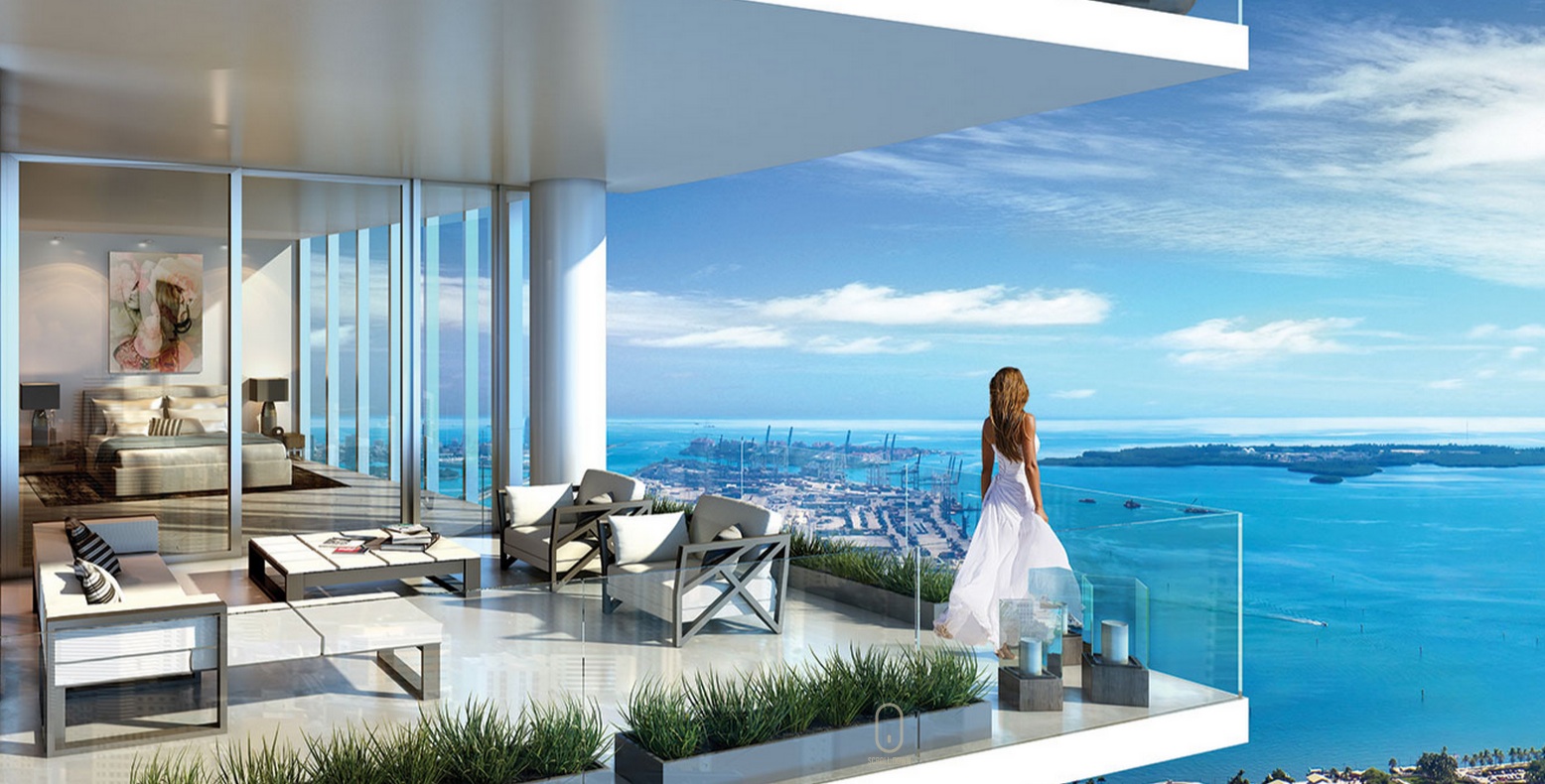Miami’s real estate market has long been a magnet for foreign investors. But developers now report that out-of-town buyers, both foreign and domestic, are seeking homes they can live it, rather than just park money into. The influx of these buyers is having a noticeable impact on how apartments, condos, and townhouses are designed, especially at the luxury end of the market.
The Miami Herald reports on several new multifamily projects whose homes include maid’s rooms, larger terraces, boutique-size closets, and guest suites.
The article points specifically to Paramount Miami Worldcenter, a $1.7 billion mixed-use complex that will blanket 27 acres of Overtown and downtown Miami, as an example of this trend. About 80 of its 513 apartments will include 250- to 280-sf studios with their own bathrooms and bedrooms, which could house a maid, a nanny, or a guest.
Another such project is the 12-apartment Louver House in South Beach, whose 2,400-sf units will include 700-sf terraces that allow residents to enjoy the outdoors more.
In an interview with The Real Deal, Camilo Miguel, CEO of Mast Capital, Louver House’s developer, says that five of the 12 apartments have been sold, at prices averaging about $1,300 per square foot. “We have a mixed group of buyers including a couple of New Yorkers looking to make it a permanent residence. There’s an owner from South America who bought here, an individual from the Apogee. They’re not investors, really. They’re end-users.”
The number of luxury homebuyers in Miami-Dade with New York addresses was up 20% in the first six months of 2015, according to the Herald. Developers are appealing to those buyers and renters who want that semi-urban experience by emphasizing their buildings’ proximity to mass transit. At least one developer, Property Market Groups, is also building smaller, more urban-like units: its 464-unit luxury rental at 300 Biscayne Blvd. called Vice will include studios at 530 sf for about $1,650 per month and one-bedrooms at 600 sf for about $1,800 per month, as well as larger units.
Miami’s attractiveness to out-of-towners continues to be the relative inexpensiveness of its housing, compared to other global cities. Quoting statistics from EWM Realty International, the Herald reports that prices in Miami Beach average $760 per sf, versus $2,204 in New York, $2,948 in London, and $2,331 in Hong Kong. (While Chinese investors account for a minuscule number of residential real estate buyers in Miami, they are seen as a growth market for whom housing units need to be tailored.)
Latin Americans accounted for 68% of all foreign buyers in Miami and Broward counties last year, according to the Miami Association of Realtors. However, number of foreign buyers has been slowing as currency crises rattle economies in Latin America and Europe. Cash sales, which often indicate international buyers, were down 12% in Miami-Dade in June 2015 compared with June 2014.
Related Stories
Transit Facilities | Dec 4, 2023
6 guideposts for cities to create equitable transit-oriented developments
Austin, Texas, has developed an ETOD Policy Toolkit Study to make transit-oriented developments more equitable for current and future residents and businesses.
Multifamily Housing | Nov 30, 2023
A lasting housing impact: Gen-Z redefines multifamily living
Nathan Casteel, Design Leader, DLR Group, details what sets an apartment community apart for younger generations.
Products and Materials | Nov 30, 2023
Top building products for November 2023
BD+C Editors break down 15 of the top building products this month, from horizontal sliding windows to discreet indoor air infusers.
Engineers | Nov 27, 2023
Kimley-Horn eliminates the guesswork of electric vehicle charger site selection
Private businesses and governments can now choose their new electric vehicle (EV) charger locations with data-driven precision. Kimley-Horn, the national engineering, planning, and design consulting firm, today launched TREDLite EV, a cloud-based tool that helps organizations develop and optimize their EV charger deployment strategies based on the organization’s unique priorities.
MFPRO+ Blog | Nov 27, 2023
7 ways multifamily designers can promote wellness in urban communities
Shepley Bulfinch's Natalie Shutt-Banks, AIA, identifies design elements that multifamily developers can use to maximize space while creating a positive impact on residents and the planet
MFPRO+ New Projects | Nov 21, 2023
An 'eco-obsessed' multifamily housing project takes advantage of downtown Austin’s small lots
In downtown Austin, Tex., architecture firm McKinney York says it built Capitol Quarters to be “eco-obsessed, not just eco-minded.” With airtight walls, better insulation, and super-efficient VRF (variable refrigerant flow) systems, Capitol Quarters uses 30% less energy than other living spaces in Austin, according to a statement from McKinney York.
MFPRO+ News | Nov 21, 2023
California building electrification laws could prompt more evictions and rent increases
California laws requiring apartment owners to ditch appliances that use fossil fuels could prompt more evictions and rent increases in the state, according to a report from the nonprofit Strategic Actions for a Just Economy. The law could spur more evictions if landlords undertake major renovations to comply with the electrification rule.
MFPRO+ News | Nov 21, 2023
Underused strip malls offer great potential for conversions to residential use
Replacing moribund strip malls with multifamily housing could make a notable dent in the housing shortage and revitalize under-used properties across the country, according to a report from housing nonprofit Enterprise Community Partners.
MFPRO+ News | Nov 21, 2023
Renters value amenities that support a mobile, connected lifestyle
Multifamily renters prioritize features and amenities that reflect a mobile, connected lifestyle, according to the National Multifamily Housing Council (NMHC) and Grace Hill 2024 Renter Preferences Survey.
Sustainability | Nov 20, 2023
8 strategies for multifamily passive house design projects
Stantec's Brett Lambert, Principal of Architecture and Passive House Certified Consultant, uses the Northland Newton Development project to guide designers with eight tips for designing multifamily passive house projects.

















